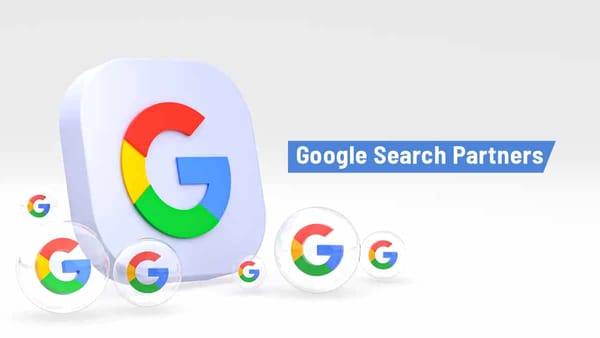Where Google Ads Appear: Understanding the Various Ad Placements

Introduction
In today's digital world, Google Ads is one of the most powerful tools businesses can use to reach potential customers. Understanding where Google Ads appear is crucial for both advertisers and businesses looking to create effective ad campaigns. With Google Ads, your ads can be shown across a variety of platforms, including search results, websites, apps, and more. In this article, we’ll dive into the different locations where Google Ads can appear and how each placement can benefit your marketing strategy.
What Are Google Ads?
Before discussing where Google Ads can appear, let’s briefly cover what Google Ads is. Google Ads (formerly Google AdWords) is a platform where advertisers can create paid ads to promote their businesses. These ads appear on various Google properties and partner sites, helping businesses reach their target audience when they’re actively searching for related products, services, or information.
Google Ads offers several types of campaigns, such as search ads, display ads, video ads, and shopping ads, which can appear in different places across the web. Now, let’s explore where these ads can appear.
Where Do Google Ads Appear?
1. Google Search Results (Search Ads)
One of the most common and recognizable places where Google Ads appear is on the Google Search Engine Results Pages (SERPs). When users search for keywords related to your business, your ads may appear at the top or bottom of the search results. These are known as search ads.
- How It Works: Search ads appear when a user types a query that matches your targeted keywords. Advertisers bid on these keywords, and Google decides which ads to show based on the bid and ad relevance.
- Benefits: Search ads are highly effective because they show up when a user is actively searching for something, making them ideal for driving immediate traffic or conversions.
2. Google Display Network (Display Ads)
Another popular placement for Google Ads is the Google Display Network (GDN). The GDN consists of over two million websites, apps, and videos that partner with Google to show display ads.
- How It Works: Display ads can be in the form of text, images, or interactive media. They appear on websites that are part of the Google Display Network, based on user interests or previous behaviors.
- Benefits: Display ads are excellent for brand awareness, targeting users who may not be actively searching for your product but are browsing content that is related to your business.
3. YouTube (Video Ads)
As the world’s largest video-sharing platform, YouTube offers a powerful space for video ads. These ads can appear before, during, or after video content, and they can also appear as banners or display ads on the YouTube homepage and within video recommendations.
- How It Works: Advertisers can choose to show video ads to users who are watching related content or fit specific demographic profiles. YouTube offers several ad formats, such as skippable ads, non-skippable ads, and bumper ads.
- Benefits: Video ads on YouTube are particularly effective for engaging audiences visually and creating memorable experiences.
4. Google Shopping (Shopping Ads)
If you run an e-commerce business, Google Shopping Ads are a powerful way to promote your products. These ads appear on the Google Shopping tab, as well as in the main search results when users search for specific products.
- How It Works: When someone searches for a product, Google displays product listings with images, prices, and your store’s name. These listings are driven by your product feed, which contains detailed information about your products.
- Benefits: Shopping ads are perfect for e-commerce businesses as they directly showcase your products, giving potential customers all the necessary information at a glance.
5. Google Maps (Local Ads)
For businesses with physical locations, Google Maps offers a unique ad placement opportunity. Local ads can show up in Google Maps when users search for nearby businesses, helping you drive foot traffic and local awareness.
- How It Works: Local ads can appear at the top of the search results on Google Maps or as a promoted pin on the map itself. These ads typically include business details like location, phone number, and directions.
- Benefits: Local ads are ideal for brick-and-mortar businesses that want to attract nearby customers and boost visits to their store.
6. Mobile Apps (App Ads)
Google Ads also offers a way to advertise within mobile apps via Google Ads app campaigns. These ads can appear within apps that are part of the Google Display Network, as well as across various Google services.
- How It Works: You can set up app campaigns to target specific apps or types of apps that align with your audience’s interests. The ads can promote app downloads, in-app actions, or both.
- Benefits: App ads are excellent for businesses looking to promote their mobile apps and engage users who are actively using mobile devices.
7. Gmail (Gmail Ads)
Gmail ads are another unique way to reach users within their inboxes. These ads appear in the Promotions tab of Gmail accounts and are formatted like an email.
- How It Works: Gmail ads look like regular emails but include a call-to-action button or image that encourages users to click through to your website or landing page.
- Benefits: Gmail ads are a great way to engage users in a more personalized space, providing a direct path to conversion.
Choosing the Right Ad Placement for Your Business
Now that you know where Google Ads can appear, the next step is to choose the right ad placement for your business. Here’s a quick guide to help you decide:
- Search Ads: Best for businesses looking to capture high-intent traffic and drive conversions.
- Display Ads: Ideal for increasing brand awareness and targeting users based on their interests.
- Video Ads: Perfect for businesses with engaging content or those looking to build brand recognition.
- Shopping Ads: A must-have for e-commerce businesses aiming to showcase their products.
- Local Ads: Essential for businesses with physical locations targeting local customers.
- App Ads: Suitable for businesses promoting mobile apps and looking to drive app installations or in-app activity.
- Gmail Ads: Effective for reaching users within their email inboxes and driving conversions.
Conclusion
Google Ads offers a variety of ad placements that allow businesses to reach their audience across multiple platforms, from search engines to mobile apps and YouTube. By understanding where Google Ads can appear, you can tailor your advertising strategy to meet your business goals, whether it’s increasing brand awareness, driving traffic, or boosting sales. Choose the right ad placement based on your target audience and marketing objectives to get the most out of your Google Ads campaigns.




